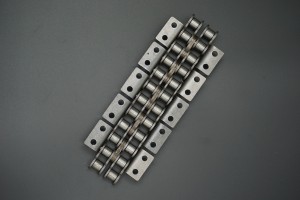For motorcycles, the chain is an important component and plays a vital role in transferring power from the engine to the rear wheel. Traditionally, motorcycles have used roller chains as the primary method of transmitting power, but as technology advances, there is growing interest in exploring alternatives. This raises questions about the viability of using roller chains on motorcycles and whether they are a suitable choice for modern bicycles.
Roller chain is a transmission chain commonly used in motorcycles, bicycles, and industrial machinery. They consist of a series of interconnected connecting rods and cylindrical rollers that mesh with sprockets to transmit power. Roller chains are designed for smooth, efficient power transmission, making them a popular choice for a variety of applications.
One of the main advantages of roller chains is their ability to handle high loads and provide reliable power transmission. This makes them ideal for motorcycles, which are subject to constant stress and changing operating conditions. Additionally, roller chains are relatively easy to maintain and can be replaced or adjusted as needed, making them a practical choice for motorcycle enthusiasts.
However, using roller chains on motorcycles is not without its challenges. One of the main issues is the potential for wear and elongation over time, which can affect the performance and safety of your motorcycle. Proper maintenance and regular inspections are essential to ensure your roller chain is in good condition and functioning optimally.
Another consideration when using roller chains on motorcycles is the choice of materials and design. High-quality roller chains made from durable materials such as hardened steel can provide better service life and performance, especially in high-stress applications such as motorcycle drivetrains. In addition, the design of the sprocket and chain tensioning system also affects the overall performance and service life of the roller chain.
In recent years, there has been growing interest in alternative drivetrains for motorcycles, including belt drives and shaft drives. These systems offer clear advantages such as reduced maintenance, smoother operation and quieter performance. While these alternatives have become popular in certain motorcycle segments, roller chains remain a popular choice for many riders due to their proven reliability and cost-effectiveness.
When considering using a roller chain on a motorcycle, it is important to evaluate the specific requirements and operating conditions of the bike. Factors such as engine power, riding style and environmental conditions can affect the suitability of a roller chain as a drive system. Additionally, the choice of lubrication and maintenance practices can significantly impact roller chain performance and life.
In summary, roller chains have been a staple of motorcycle drivetrains for decades, providing reliable power transfer and ease of maintenance. While alternative drivetrains are gaining traction in the motorcycle industry, roller chains remain a popular choice for many riders due to their proven performance and cost-effectiveness. With proper maintenance and attention to design and material quality, roller chains can be a viable and practical option for motorcycles, providing efficient power transfer and reliable performance on the road.
Post time: May-10-2024

